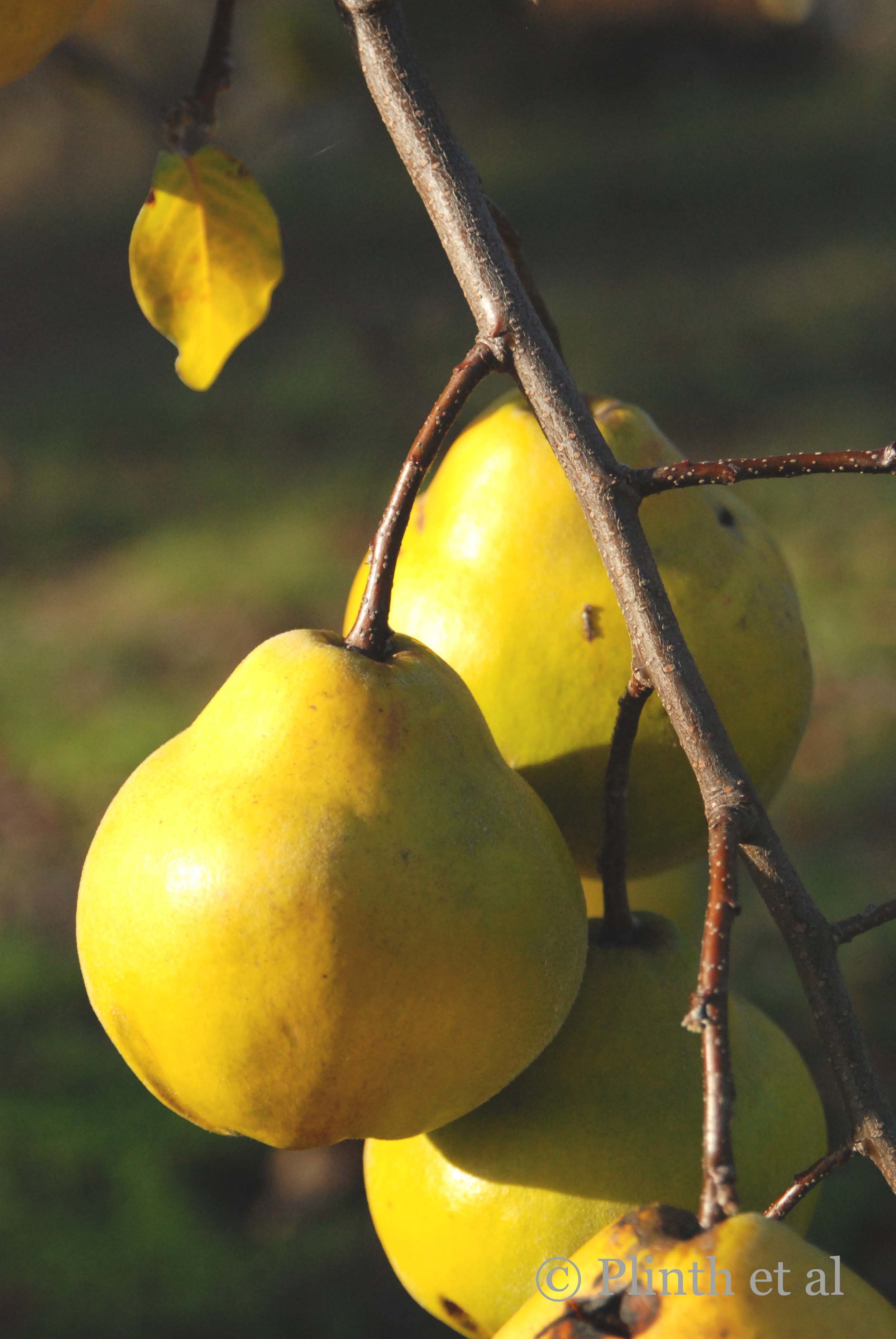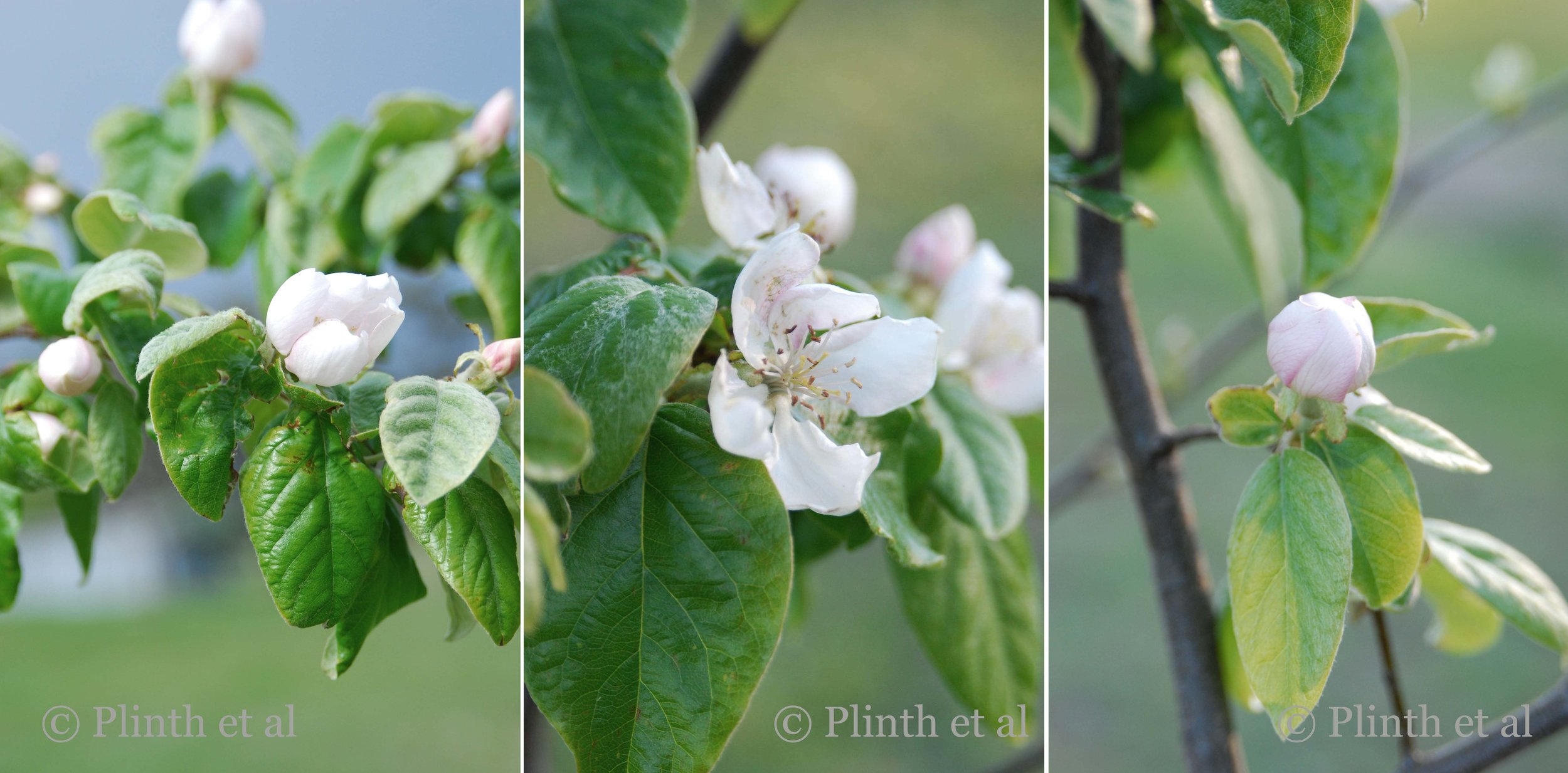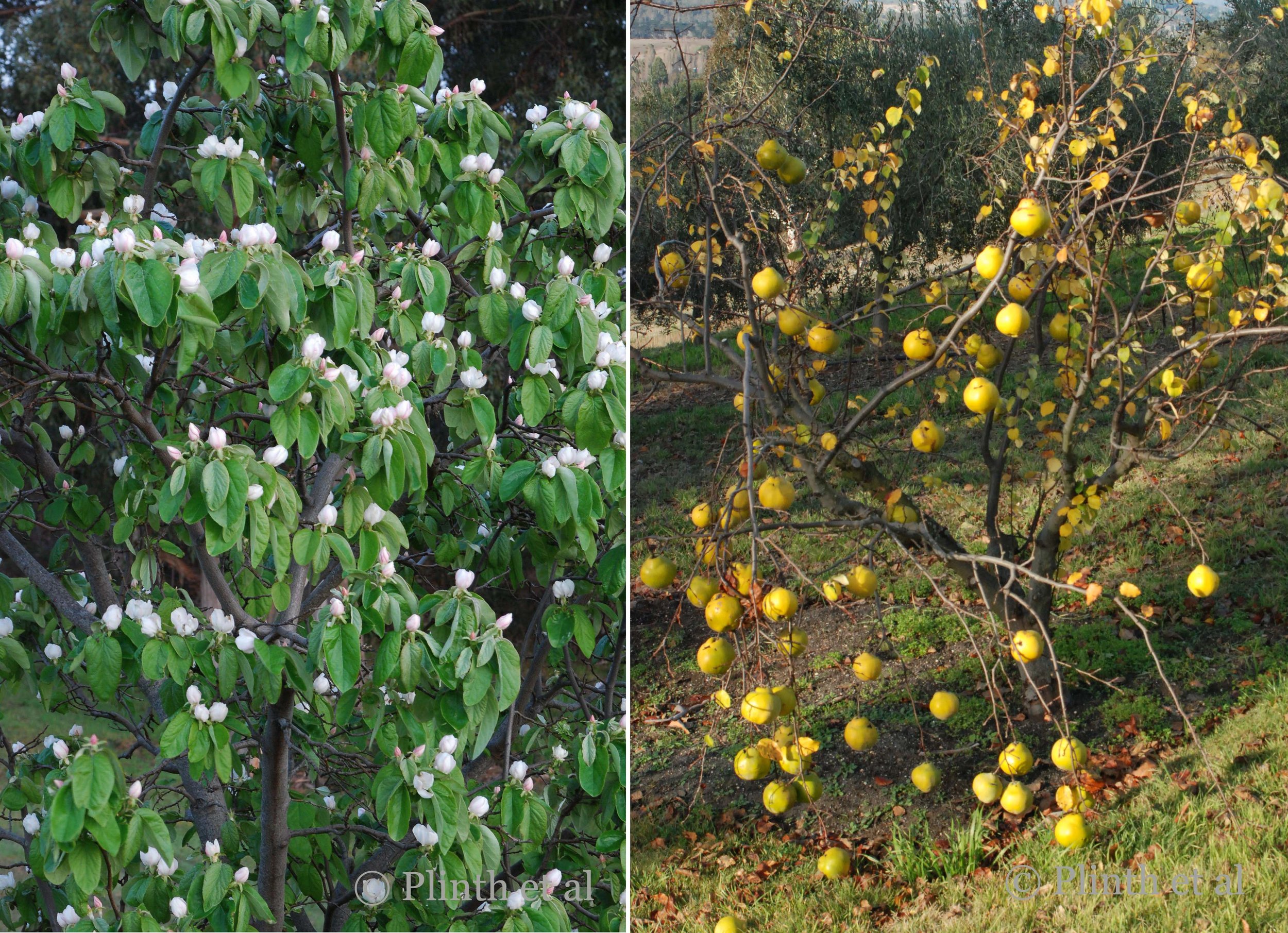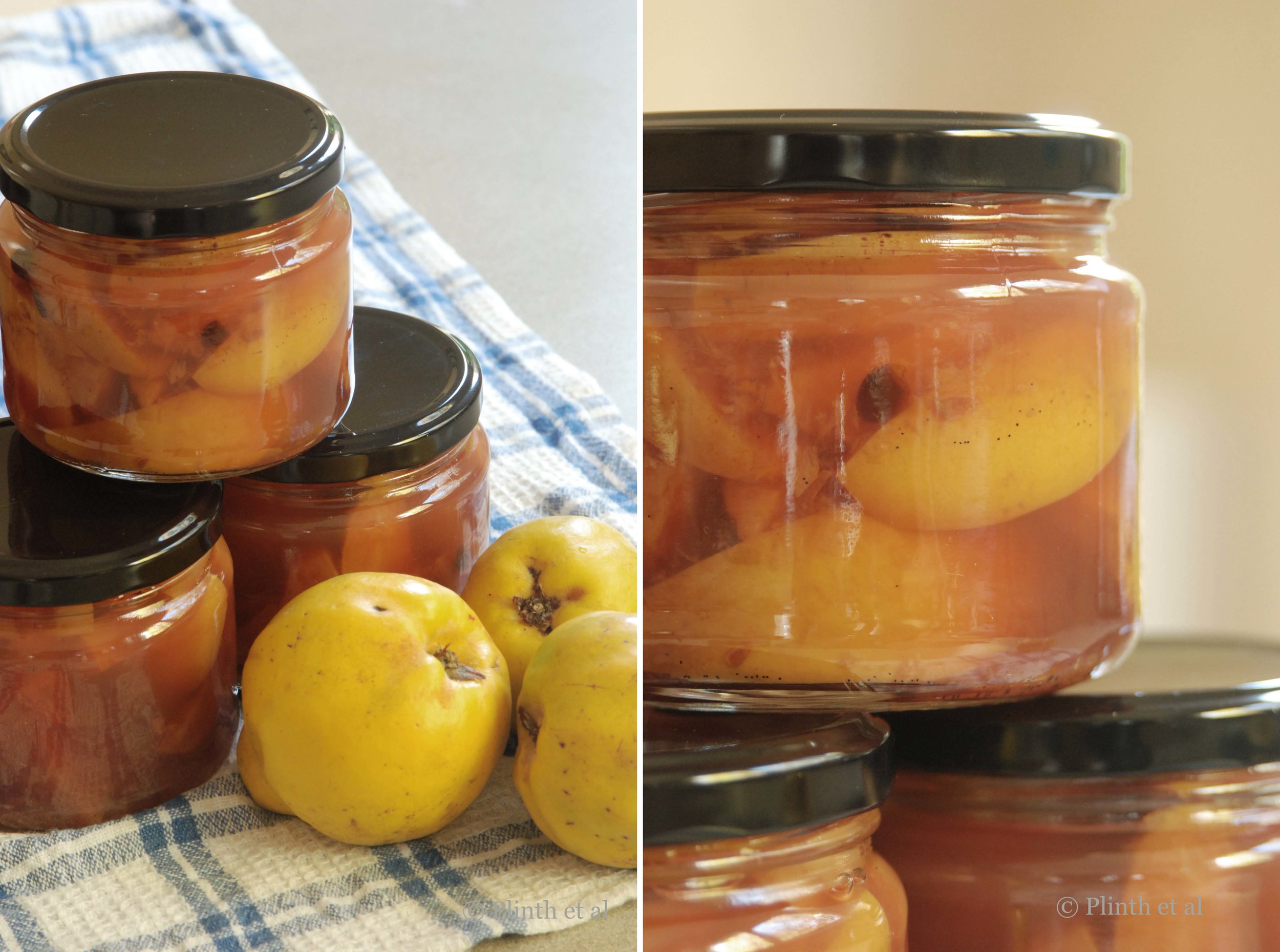Quince (Cydonia oblonga) has a mellifluous ring when mouthed from the lips. I never savored a quince until I came to Tasmania, but when my taste buds acquainted themselves with one, I was seduced. Just as the ancient Chinese celebrated the peaches of immortality consumed every one thousand years by the deities at a jovial banquet, the ancient Europeans embraced quinces as the coveted golden apples in mythology. The quince aroused jealousies among Aphrodite, Athena, and Hera, all of who wooed Paris with offers of the most beautiful woman for marriage, wisdom, and power and strength. It slowed down the formidable Atlanta in the infamous race where hapless suitors lost their heads. As part of the Twelve Labors, Hercules was summoned to slay the serpent guarding the quince tree in the Garden of the Hesperides.
The quince tree has two glorious seasons –in spring when the leaves have that verdant greenness overlaid with downy gray coating and the single five-petaled flowers unfurl, and in autumn when the branches are groaning underneath the weight of the radiant golden fruits. There was a sizable tree in the rose family beds at the Arnold Arboretum of Harvard University where the flowers and fruits often intrigued me, but not enough to explore cooking them. Long-lived trees are presumably rare in North America because fire blight, a bacterial disease, often devastates them at a certain point. No immortal sacredness or blessing would guard the tree of golden apples against this disease.
Modern convenience has deemed the quince an anachronism amidst apples, bananas, and oranges, which fulfill the time-hurried person's qualifications for minimal preparation and consumption. The quince resists fresh consumption and assaults those foolish enough to try with its astringency and hardness. It requires one to abide his or her time slowly through cooking, and those who do the abiding are rewarded with the honeyed, but tart fragrance.
Latin cultures often process the quince, known as membrillo in Spanish, into dulce de membrillo, which is traditionally paired with Manchego cheese. Middle Eastern countries have favored it in their cuisine—the Lebanese, calling it sfarjel, consume it as a jam., the Syrians slow cooked quince in pomegranate paste (dibs rouman) with shank meat and kibbeh (a savory pie with burghul and mince meat) and is called kibbeh safarjalieh, and the Iranians either prefer beh raw or in stews and jam, and like their neighbors Afghans, sometimes apply the seeds as a remedy for pneumonia and lung disease.
In serious food circles, Australians have embraced the quince as a versatile component of salads, cooked meats, and desserts. Skim through the food magazines between late autumn and winter, and there is bound to be one or two recipes calling for quinces. Maggie Beer and Stephanie Alexander, two of Australia's top food proponents, have enthused about quinces in their writings – the former enamored enough to dream and plant a quince orchard in her Barossa farmhouse property and the latter in drinking quince wine on an iced frappe in France. Where gardens and orchards have fallen into disrepair and neglect in Australia, quince trees typically persist well untended. Quinces can be found in specialist markets and good greengrocers, although it is best to befriend someone who has a thriving tree with fruits, but oblivious to their culinary value. I once watched my housemate embark energetically on a quince quest, acquiring and purchasing all the quinces he would, in order to poach and preserve them in jars. We picked several fruits at a New Norfolk farm, and I nearly mistaken them for yellow apples, if not for their distinctive, pineapple shapes. Placed on the counter at home, the quinces glowed golden in the late afternoon light filtering into the kitchen. Peeling away their skins uncovered their creamy, nearly impenetrable flesh with pips. The peeled slices were then covered with water, verjuice, sugar, and assorted spices. Simmering for hours in the heavy saucepans, the cooked quinces began to unleash their signature scents in the warm kitchen, and for days, the kitchen was wonderfully perfumed with spiced quinces. It brought to mind that the tip I was given by a dear British friend of mine, who would place a quince to 'aerate' an unused corner of her musty wardrobe.
Quinces and Pears Poached in Verjuice (from Maggie's Harvest by Maggie Beer)
3 quinces
Juice of 1 lemon
Sugar, to taste (optional)
3 cups (750 ml) verjuice
1 kg beurre bosc pears, peeled, cored, quartered
Preheat the oven to 180◦C. Peel and core the quinces, then cut each cone into 8 wedges, putting the cut quince into a bowl of water acidulated with lemon juice as you go to prevent discolouration. If you are using sugar, simmer it with the verjuice on a medium heat for approximately 20 minutes to being to form a syrup. Poach the quince and pears in the oven with the verjuice and sugar (if using), in a large, flat baking dish until cooked through. (The cooking time will depend on the variety and ripeness of the fruit.) the fruit should be soft to the touch but still intact and will not be the deep ruby-red of long-cooked quince. Once cooked, put the quince with the syrup into a pan and, over high heat, reduce the verjuice until both the fruit and verjuice caramelise—turn the slices of fruit over once the first side has caramelized. Serve with mascarpone or fresh cream, or with a delicate Italian lemon biscuit.
~Eric








